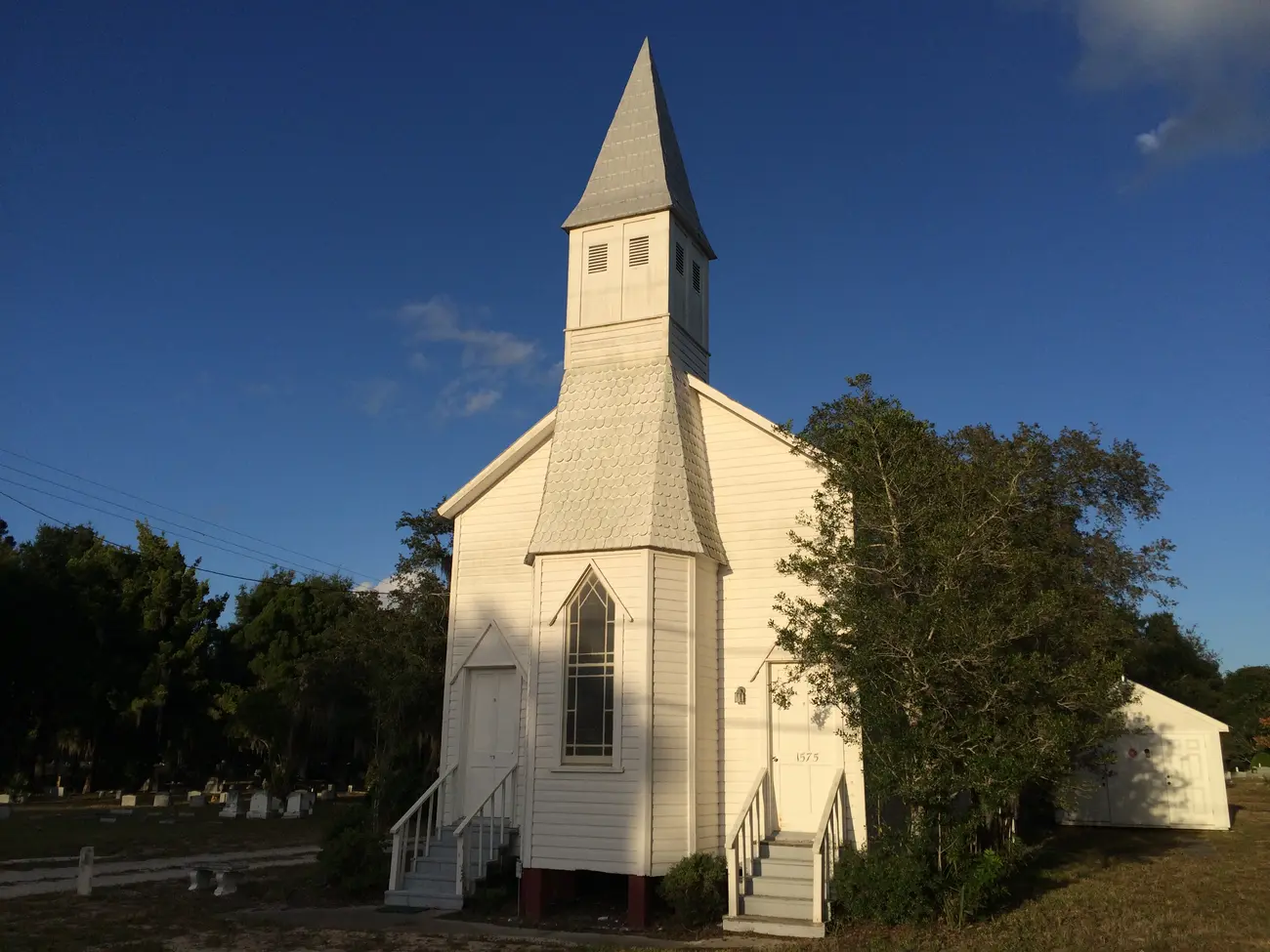The LaGrange community was established in the mid-1800s, between what would become Titusville and Mims. The LaGrange Church, organized in 1869, is the oldest Protestant church on the east coast of Florida, from New Smyrna to Key West.
The original church was built in what is now the northern section of LaGrange Cemetery. A two story log church was built in 1872, at the church’s current location southwest of the cemetery.
The quaint, Wooden Gothic style LaGrange Community Church standing today was built in 1893, with boards surrounding the first floor of the log church. A pointed steeple and stained glass windows were added.
In addition to being a church, the building was a public meeting space, and the first public school in Brevard County.
Walking through the LaGrange Cemetery is like taking a trip back in time. The cemetery serves as a museum of local history, particularly if Rosalind “Roz” Foster, president of the North Brevard Heritage Foundation, is your guide.
In 1995, Foster led an effort to refurbish and preserve the LaGrange Cemetery, following the restoration of the church.
“I saw the cemetery that was adjacent to the church, and it was in deplorable condition, overgrown, and the tombstones were lying on the ground, vandalized,” Foster says.
She asked the Titusville Garden Club to help restore the 1881 gravesite of the town’s namesake, Col. Henry Titus, and the refurbishment of the cemetery continued from there.
“We noticed there was a lot of history here,” says Foster. “Since 1995, it’s been a continuous effort to restore the cemetery. We work diligently to mark unmarked graves, to validate them, of course, with obituaries, so it’s a long and arduous task to do, but we’re happy to do it.”
Foster and her team have identified more than 100 unmarked graves while cleaning and restoring existing tombstones. They have complied genealogies for many important pioneer settlers of the area who are buried in the cemetery. The team mapped the cemetery plot by plot.
The Feaster family plot is in the oldest section of the cemetery. The oldest grave at LaGrange has a very modest marker that belongs to Andrew Feaster, who fought in the war of 1812.
The original undertaker for the community, Andrew Froscher, is buried at LaGrange. He was a carpenter who helped to build the historic Debary Hall in Volusia County. He later used his skills to build caskets for the deceased in Brevard County, and received training in mortuary services.
The largest marker in the LaGrange Cemetery is for the Mims family, founders of the town of Mims. Local folklore maintains that the Mims brothers were relatives of the notorious outlaw Jesse James. “That’s the story,” Foster says with a laugh. “I can’t validate that, but that’s what they say.”
The influenza outbreak of 1918 was devastating to the John Lee Ormond family, with the father succumbing first. “He died December third, the little baby died December fifth,” says Foster. “The mother lasted long enough to care for her dying child, and she died December seventh.” The three are buried next to each other.
The back portion of the cemetery is the African American section, which was particularly overgrown when Foster and her team started their restoration project. They replaced many missing tombstones with granite markers, an effort that continues today.
The most recognizable names in the historic LaGrange Cemetery are found in the African American section. This is where educators and civil rights activists Harry T. and Harriette V. Moore were put to rest.
The couple’s home in Mims was bombed on Christmas night, 1951, which was also their twenty-fifth wedding anniversary. They both died from injuries sustained in the blast, and their murders have never been solved.
“Every December there is a memorial service here, paying respect to these wonderful people,” Foster says. “Also adjacent to them are some of the well-known pioneer black families of the area who settled this area in the 1800s. The Stricklands, the Warrens, the Cylers, the Sheldons, the Highsmiths, a lot of them are buried in this cemetery, so we also honor them.”
There are hundreds of other stories in the LaGrange Cemetery, each one contributing to our local history.

